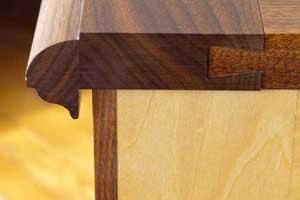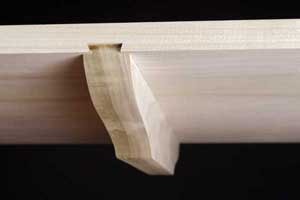Making Sliding Dovetail Joints
For the woodworker building furniture and cabinets, the sliding dovetail is a joint well worth mastering.
Strong and versatile, the sliding dovetail joint has many applications, from case construction to leg-and-rail joinery. You've probably seen a drawing of the sliding dovetail joint. It's a hybrid of the dado and the dovetail, with a groove in one part, a tongue on the other. Because both the groove walls and the tongue sides are angled like a dovetail, the joint has to be assembled by sliding the tongue into the groove from one end.

Those canted walls give the sliding dovetail joint a decided strength advantage over a dado. The joint mechanically resists tension, meaning that the tailboard can't pull away from the grooved board. Even without glue, the parts stay linked together. The wood must crush or break before the two parts separate.

This characteristic of the joint simplifies assembly routines. You won't have parts collapse while you're fumbling with clamps. Two hands usually are sufficient for assembling even multi-part casework, like a chest of drawers. Slightly bowed panels sometimes can be pulled into line without elaborate clamping configurations.

Other applications of the sliding dovetail abound:


Keep the inspiration coming!
Subscribe to our newsletter for more woodworking tips and tricks






